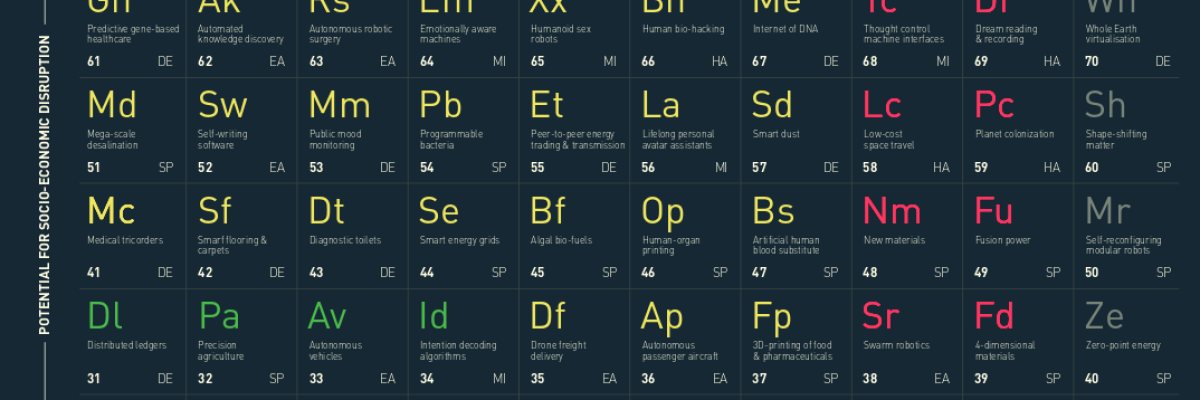Scientists from Imperial Tech Foresight have developed a table that classifies the most important technological ideas of the present and the future. The researchers were inspired by the periodic table of...
Scientists from Imperial Tech Foresight have developed a table that classifies the most important technological ideas of the present and the future. The researchers were inspired by the periodic table of chemical elements, which became one of the most important stages in the development of chemistry and physics in the late 19th and early 20th centuries.
The table includes the top 100 most important technologies that already exist, will soon emerge, or will probably be developed someday in the future. The elements of the table are arranged along two axes: the horizontal axis (X) corresponds to the time of the widespread use of the technology (not its invention), and the vertical axis (Y) represents the potential destructive effect for society and the economy.
Elements of the table are painted in several colors. Green correspond to technologies that already exist, yellow ones - that will be developed in the near future (10-20 years) or are at the stage of experiments. The red ones are ideas that are only at the research stage and will appear in the distant future - more than 20 years. In the gray zone are technologies that still sound like science fiction and theoretically may never appear.
All elements of the table are divided into five areas of scientific activity: data ecosystems, intelligent planet, extreme automation, improvement of human capabilities, human-machine interactions.
Among the technologies that we already use and which, in the opinion of the authors, do not pose a great danger - cryptocurrency, solar and wind energy, and vertical farms. The most dangerous technologies from those already in our possession are distributed ledger technology (DLT), unmanned vehicles, precision farming, and algorithms for intention recognition.
The most destructive technologies in the table are artificial consciousness and telepathy, but if they do appear, it will not be very soon.
The most destructive and the furthest from our time is the element scientists call Qt, and can not say anything about it.
For each element of the table there are examples of organizations and companies that are engaged in the development of this field.
Actually, we will probably receive telepathic technologies from Facebook or Elon Musk's project Neuralink, and artificial consciousness can be expected from Google.
The goal of the developers of the table, Richard Watson and Anna Kupani, was to visualize ideas that could fundamentally affect the development of mankind in order to try to take into account the possible consequences when creating such technologies.
Some corporations use the table at internal seminars when discussing the further development of their products.
Share this with your friends!






Be the first to comment
Please log in to comment